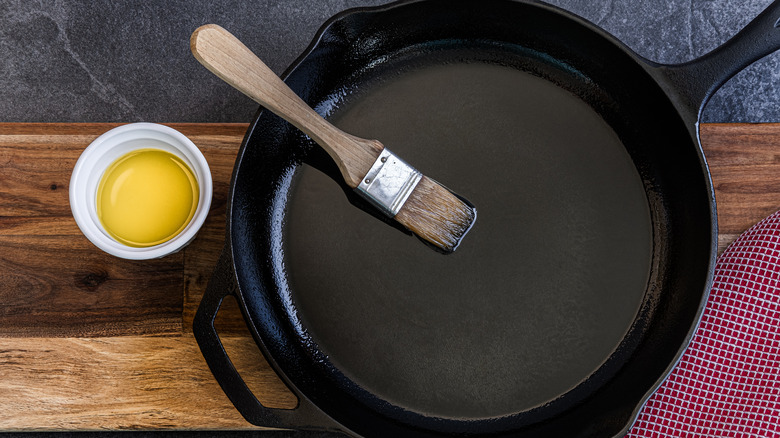Anyone who’s cooked with cast iron is familiar with the common sight of grayish-black flecks on the towel when they dry and season their pan. This is completely normal. Still, it might make you think the pan is not completely clean. There’s no need for concern, though — the residue is a harmless bit of the dark-colored seasoning that builds up each time you cook with oil in the pan.
Seasoning a cast iron pan doesn’t refer to adding flavor. In this case, it means heating oil to the right temperature, which then causes some of the carbon bonds in the oil to rearrange themselves into a flexible and slick polymer that protects the metal from rusting and your food from sticking. The seasoning layer fills in the pores and microscopic crevices of the pan completely over time. It’s nature’s way of creating a nonstick surface that’s not toxic, and it’s fully replaceable should it become damaged (try that with most commercial nonstick pans!).
Proper and repeated seasoning will reduce, but not eliminate black flecks

When a pan is seasoned properly, the oil polymer makes an incredibly thin layer in the surface. If you notice your seasoning coming off in larger flakes or layers, the pan just hasn’t been seasoned properly. The oil might have been too thick, or too many seasoning layers could have been baked on. These flakes aren’t harmful either; although they don’t look great in your food, they’re not dangerous. If you stew an acidic recipe or simmer liquids for a long time in cast iron cookware, you’ll see more residue when you clean the pan because it’s been loosened.
None of these issues are serious problems for durable cast iron. In the worst case, you can scrub the pan with grease-removing soap and steel wool to take off all the gunk, and then simply bake on a new layer of seasoning. But if you’re only seeing small bits of residue, you just need to pay a bit more attention to drying your pan carefully after each cooking session and then heat the pan with a tiny bit of oil rubbed on. If the pan looks shiny, there’s too much oil; that’s the type of seasoning that can flake off or become gummy. Use a light hand and be consistent — your pan will gradually become almost entirely free of residue when you clean it.






